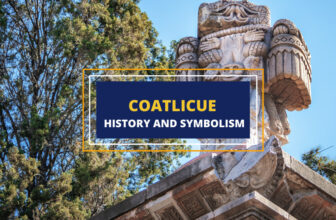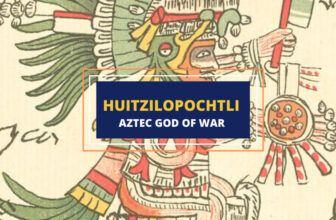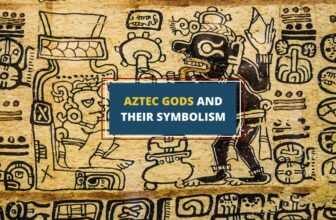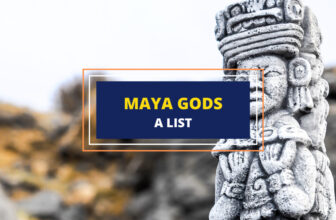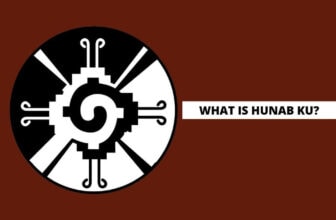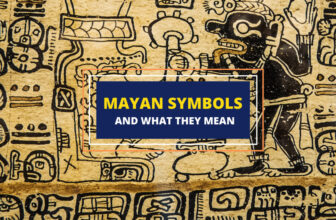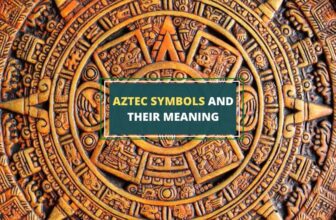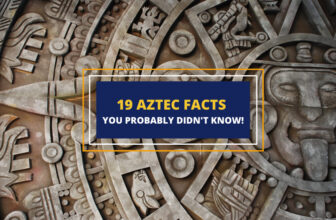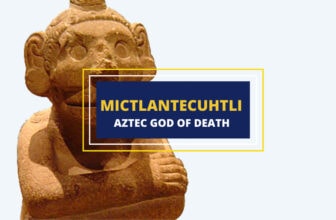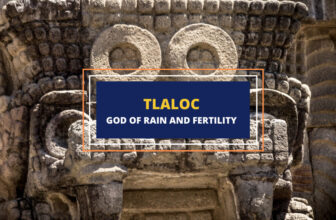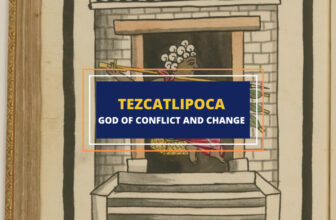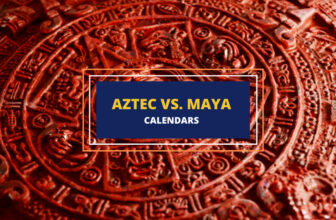The native peoples of North, Central, and South America were as many as they were different. Ranging from nomadic and tribalistic societies like most of the people in North American to incredibly advanced cultures and empires such as the Maya and the Aztec, all these indigenous cultures also had various colorful and interesting mythologies.
Northern American Myths
Many people don’t differentiate much between the various indigenous North American tribes. From a certain point of view that’s understandable as most of these native tribes had similar societal structures and technological development.
Additionally, a lot of them were nomadic in nature and covered large swathes of land in their travels.
There are some similarities among these groups, such as the belief in an omniscient Great Spirit that was present in all of the land, air, water, and nature, similar creation narratives, a common belief about the collective memories of the ancestors, and others. However, even so, there are major differences between even neighboring North American indigenous people.
Artic American Region – Northern Canada, Greenland, and Coastal Alaska
The people in this region live their whole lives surrounded by tundra, snow, and ice. As a result, most of their myths tell stories about the moon, the winds, and various ice, earth, and water giants.
Most native tribes in this region worshipped the creator god Anguta and his daughter Sedna. Anguta is said to have created the Earth itself together with the seas, rivers, and heavens. Sedna, on the other hand, was the one who created all living things. She is also the main protective divinity of the Inuit people.
Subarctic Region – Inland Northern Canada and Inland Alaska
People in this region shared some of their myths with the native Americans in the Arctic region. There seems to be an even stronger emphasis on the extreme climate in the myths of this region, however. Giants are also even more present in the Subarctic mythologies as is the dependence and reverence of salmon as a major food source.
Northeastern Canada, Northeastern US, and Great Lakes Region
The mythologies of this region focus on female deities, including the creator – the Big Turtle. Another example is the First Mother from whose body grew the first tobacco and corn. This region also features two of the most famous North American divine heroes Manabus and Glooskap.
The mythologies of this region are further divided into four tribal groups, each with its own myths and stories:
- Seneca mythology
- Wyandot mythology
- Ho-Chunk mythology
- Iroquois mythology
Great Plains Region
The myths of the Great Plains region are some of the most famous and emblematic of all North American mythologies. They include multiple myths about the buffalo, the main source of food, clothing, utensils, and housing for the people of the Great Plains.
The Sun is also a key deity in these myths as are the famous Thunderbirds and the Morning Star. A core theme of these myths is the making of a journey, be it through the land or to a supernatural place through the land, across the sky, or after death.
A famous hero in this mythology is Blood Clot Boy who was created from a clot of blood. Another key figure is the Old Man Waziya who’s a trickster at the center of a lot of humorous stories. He lived beneath the Earth with his wife and daughter with the latter eventually marrying the Wind and giving him four sons – North, East, West, and South.
American Northwestern Region
The key mythological figure in this region is the trickster Raven who also brings daylight to the world each day. Most myths focus on the people’s relationship with the rivers and the coastal regions which is where these tribes built their towns. There are also many stories about parallel worlds in the sky and in the sea.
Mythologies from this region are further divided into five distinct groups:
- Tsimshian mythology
- Haida mythology
- Lummi mythology
- Nuu-chah-nulth mythology
- Kwakwaka’wakw mythology
American Plateau Region
The people of the Plateau region wrote a great many myths that focused on their relationship with nature and the land. They speak of great admiration for the landscape in which they lived and a strong reverence for the animals on which they depended for food. The Coyote and the Fox are also very common spirits and heroes of the people of this region.
The main mythological cycle here is the Salish mythology which was spread all across the US states of Idaho, Montana, Washington, as well as British Columbia in Canada.
California and Great Basin Region
Native Americans in this region also had a strong fascination with the Coyote as a character. In most myths here, he was both a creator and a trickster god. The Sun People, the Darkness, and the Star Women are other key figures faring from this region. The famous Eart-Maker Myth also comes from this region.
The mythologies of the Great Basin and California also have a lot of differences between them and are usually divided into four groups:
- Pomo mythology
- Ohlone mythology
- Kuksu mythology
- Miwok mythology
Southwest Region
This region was the home of the famous Apache, Pueblo, and the Navajo people. Their myths tell of the first human beings to emerge from the Underworld. The Hopi Pueblo Americans also believed that the first people were actually the Sun and the two goddesses Spider Woman and Hard Being Woman (Huruing Wuhti) with the latter two being the ones who created all life on the Earth.
The main themes of the myths from this region include tobacco and its origin, corn, horse riding, and a constant battle between the summer and winter seasons. The mythological cycles of the Southwest are generally divided into four groups:
- Diné Bahaneʼ (Navajo) mythology
- Ute mythology
- Zuni mythology
- Hopi mythology
Central American Myths
Central America is the home of arguably the biggest and most advanced American civilizations. Unfortunately, the people living here were also restricted by very harsh climate conditions, lack of metal for tools, lack of big work and riding animals, and – in the Yucatán Peninsula – even a lack of easily accessible freshwater.
These adverse conditions also helped push the Central American people into some astonishing scientific and engineering marvels that were often centuries ahead of anything accomplished in Europe, Asia, and Africa. The fascinating land and climate in which these people lived also pushed them to come up with some of the most colorful and captivating myths in the world.
Aztec Mythology
The Aztec empire ruled over most of modern-day central Mexico. Geographically, it can be viewed as a North American culture, but it shared a lot of its culture, societal structure, and mythological themes with the native American cultures of Central America.
It was a very militaristic culture with a hierarchical social order and a prominent religion with a number of unique gods and goddesses. Everything in the Aztec way of life revolved around their religious symbolism – from their day-to-day practices and activities to their language.
Omeotl, a dual deity made up of the gods Tonacatecuhtli and Tonacacihuatl, is the Creator God in Aztec religion. Some of their other famous deities included Nahuatl, Quetzalcoatl, Tezcatlipoca, Xipe Totec, and others. Voluntary human sacrifice was common in Aztec society as a way to appease their many gods. It was mostly done by prisoners of war, however.
Maya Mythology
The other major culture of Central America was the Maya. At their height, their empire ruled over modern-day southern Mexico and northern Central America.
The Maya were arguably the most technologically and scientifically culture in the world in their day with their complex irrigation and water- purification and storage system, their aqueducts and sophisticated infrastructure, as well as their astonishing understanding of astronomy.
All this didn’t make the Maya a less religious society, however – to the contrary. Like the Aztecs, the Maya filtered everything they did through the prism of their religion and its rich symbolism. The Maya mythology was very strongly influenced by their colorful tropical environment and almost all deities, heroes, and myths symbolized different animals, landscape features, meteorological events, or celestial bodies.
Human sacrifice was also present in Mayan culture although it doesn’t seem to have been as prevalent as it was in the Aztec empire.
Olmec Mythology
The Olmec Native Americans lived in what are today’s Veracruz and Tabasco regions of southern Mexico. The first major Mesoamerican civilization, the Olmecs predated both the Maya and the Aztecs. As a result of that, we now know much less about their religion and mythology than we do for the other major Central American civilizations.
We do know that their religion features a lot of supernatural deities and monsters, however. We don’t know most of their names, so the terms used for them today are rather descriptive. Some of the most prominent ones include the Olmec Dragon or the Earth Monster, the Bird Monster, the jaguar-faced Maize God, the Rain Spirit and the Were-Jaguar deity (which may or may not be one and the same), and others.
Purépecha Mythology
This civilization faring from the Lake Pátzcuaro region in Mexico is also called the Tarascans. They had a polytheistic religion like most other Native American cultures in this region although we don’t know too much about their mythology.
Some of the more famous deities include the Sun God Curicaveri, the Water God Xarátanga, the Creation Goddess Cuerauáperi, the War God Cuitzeo, the Fertility Goddess Pehuame, the Evil Goddess Auicamine, and others.
South American Myths
The cultures and religions of South America are as colorful and diverse as those of Central and North America. They do share some similarities with the mythologies and cultures of Central America but are also incredibly different and unique in other regards both from them and from each other.
Inca Mythology
The Incan empire is the third most famous Native American civilization together with the Maya and the Aztecs. They ruled over a vast area high in the Central Andes (modern-day Peru) and thrived for many centuries before reaching their peak in the 15th and 16th centuries AD despite the very harsh conditions of the region.
The Incan belief system was as highly allegorical as those of the Maya and the Aztecs, and it sought to explain everything from the inner workings of the Cosmos to the natural world around the people and their everyday activities. Their many fascinating deities included Apu, the god of the mountains, Catequil, a god of thunder and lightning, Ch’aska (Venus), the goddess of the dawn and twilight, Illapa, a famous water god, Mama Allpa, a fertility goddess, and many others.
Mapuche Mythology
This is the religion of the people native to modern-day southern and central Chile and southwestern Argentina. The Mapuche people have a very extensive mythology that was passed down orally through their machi or shamans who were usually the elder women of the tribe.
The Mapuche mythology is focused both on cosmology and on the natural world around them. They revere the Sun and the Moon like the Incan people and are also very mindful of the Pillan and Wangulen – the ancestral spirits of their people. Their mythology also includes the Ngen who are the spirits of nature around them and Wekufe, the evil spirits that bring the Mapuche most of their troubles.
Chilote Mythology
The Chilote religion belonged to the Huilliche and Chono people of the Chiloé Archipelago, off the coast of southern Chile. This mythology is largely focused on the sea upon which these people relied for their food and trade.
This mythology is separated from the other South American cultures and was also largely unaffected by the Spanish invasion and influence for a long time. Spanish influences eventually reached the archipelago and the Chilote mythology was intertwined with many Spanish and South American myths.
Some of the most prominent creatures in this mythology include:
- El Basilisco – a monster that sucks the saliva out of its victim
- El Caleuche, a ghost ship that carries wizards and dark sailors
- Camahueto – a calf with a silver horn that wizards use to help cure “sexual dysfunctions”
- La Furia – a mythical woman that seduced men and drained them of their energy before killing them
- Cherruves – a man with a snake body who controlled the comets and brought misfortune, and many others.
Muisca Mythology
This is the mythology of the Altiplano Cundiboyacense indigenous people of the Eastern Ranges of the Columbian Andes. At the time of the Spanish invasion, the Muisca people lived in an extensive and thriving confederation of a lot of tribes that shared a largely similar language, culture, and mythology.
The two most famous Muisca myths that have survived to this day are the legend of El Dorado and that of the Monster of Lake Tota. Another famous myth is that of the Hunzahúa Well – a well of fermented alcohol that formed when the mother of the zaque (ruler) Hunzahúa caught him having intercourse with his sister Noncetá and Hunzahúa spilled his drink.
Guarani Mythology
This is the mythology of the Guarani people of Gran Chaco in modern Paraguay, Bolivia, Argentina, and Brazil, as well as the Tupi people of Brazil. As neither of these cultures had a written language, their myths had to spread orally and used to differ from tribe to tribe. They did share a creation myth where the Supreme God Tupã and the Moon Goddess Arasy created humanity from clay.
Guarani religion is somewhat deistic in that Tupã and Arasy are said to have left people to their own devices after creating them. There is still a large supernatural element to the everyday life of the Guarani and Tupi people, however, as they believed Tupã and Arasy also left a lot of good, evil, and other spirits all around them.
The mythologies of the Americas are vast, diverse, and intriguing, demonstrating the philosophies and values of its people. Each of them is worth a whole library to fully cover and explain, and in the articles below, you’ll find information on some of the more famous American mythologies
